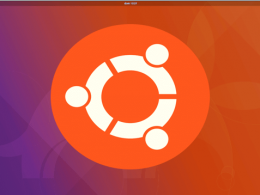OpenAI unveiled its latest flagship model, GPT-4o (where “o” stands for “omni”). This groundbreaking model represents a significant leap forward in natural human-computer interaction. Unlike its predecessors, GPT-4o can reason across audio, vision, and text in real time.
In this article, we’ll explore how GPT-4o benefits security experts and discuss its remarkable capabilities.
The Multimodal Revolution
Accepting Multimodal Inputs
GPT-4o accepts any combination of text, audio, and image as input. This flexibility allows security experts to communicate with the model using various modalities, enhancing their workflow efficiency. Whether it’s analyzing security logs, interpreting surveillance footage, or understanding complex threat scenarios, GPT-4o adapts seamlessly.
Real-Time Responsiveness
GPT-4o responds to audio inputs with impressive speed—as little as 232 milliseconds, on average. This responsiveness mirrors human conversation, enabling fluid interactions. Security experts can ask questions, provide context, or request insights, and GPT-4o processes their queries swiftly.
Boosting Your Security Arsenal
Imagine a powerful tool that can:
- Unravel Hidden Threats: By analyzing mountains of data on past attacks and vulnerabilities, GPT-4o can identify patterns and predict future threats, giving security professionals a crucial edge.
- Automate Repetitive Tasks: Free yourself from tedious log analysis and threat detection. GPT-4o can handle these tasks with ease, allowing you to focus on strategic initiatives like incident response and vulnerability management.
- Spot Phishing Like a Pro: GPT-4o’s exceptional language processing can identify even the most cunning phishing attempts. Emails, social media messages, and even voice interactions are no match for its keen eye (or should we say, algorithm?).
Our evaluations of cybersecurity, CBRN, persuasion, and model autonomy show that GPT-4o does not score above Medium risk in any of these categories.
According to OpenAI
The Potential Dark Side
The same power that empowers good can also be used for malicious purposes:
- Crafting Malicious Code: The very tools that help us understand threats can be used by bad actors to create sophisticated phishing emails, malware, and social engineering attacks.
- Weaponizing Misinformation: GPT-4o’s ability to generate realistic text can be a double-edged sword. Malicious actors could exploit this to spread misinformation and disrupt critical infrastructure.
- The Rise of Deepfakes: Imagine eerily realistic audio and video impersonations used for social engineering or tarnishing reputations. This is a potential reality with GPT-4o’s deepfake capabilities.
The Future of Security with GPT-4o
While GPT-4o presents a significant leap forward, it’s a tool, not a magic bullet. Security experts need to be aware of its limitations and potential for misuse. OpenAI has implemented safeguards, but ongoing vigilance is essential.
The key takeaway? Collaboration between AI developers and security professionals is paramount. By harnessing GPT-4o’s power for good and mitigating the risks, we can build a more secure digital future.
Key Capabilities for Security Experts
- Multilingual Understanding
GPT-4o achieves state-of-the-art results in voice and multilingual benchmarks. Its language understanding capabilities extend beyond English, making it a valuable asset for global security teams. Whether analyzing intercepted communications or translating threat intelligence, GPT-4o excels. - Vision Enhancement
GPT-4o’s vision understanding surpasses existing models. Security experts can feed it images from surveillance cameras, satellite imagery, or crime scenes. The model identifies objects, anomalies, and patterns, aiding investigations. Imagine a security analyst uploading a suspicious image and receiving real-time insights—GPT-4o makes this possible. - Audio Analysis
Security professionals deal with audio data—phone calls, voice recordings, and ambient sounds. GPT-4o’s audio capabilities allow it to transcribe conversations, detect emotional cues, and even identify speakers. It’s like having an AI assistant that understands spoken content and provides relevant context. - Threat Scenario Simulation
GPT-4o can simulate threat scenarios based on textual descriptions or audio inputs. Security experts can test their incident response strategies, evaluate vulnerabilities, and explore “what-if” scenarios. The model generates realistic narratives, helping teams prepare for diverse security challenges. - Guardrails and Safety
OpenAI has prioritized safety in GPT-4o. Techniques such as filtering training data and refining behavior post-training ensure responsible use. Security experts can trust the model’s outputs while maintaining ethical boundaries.











